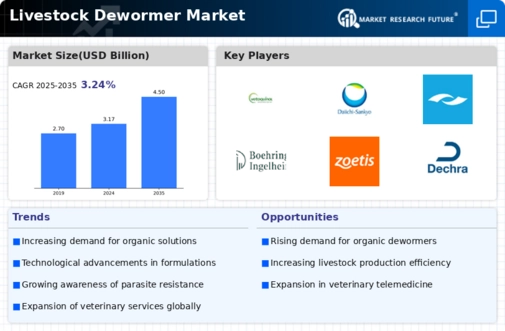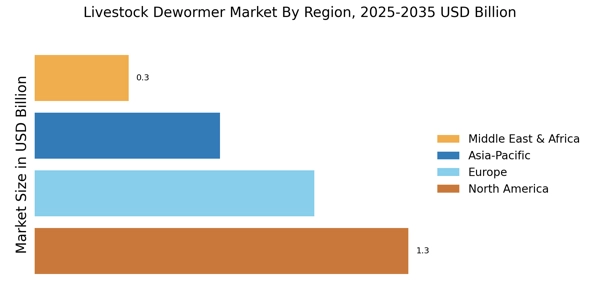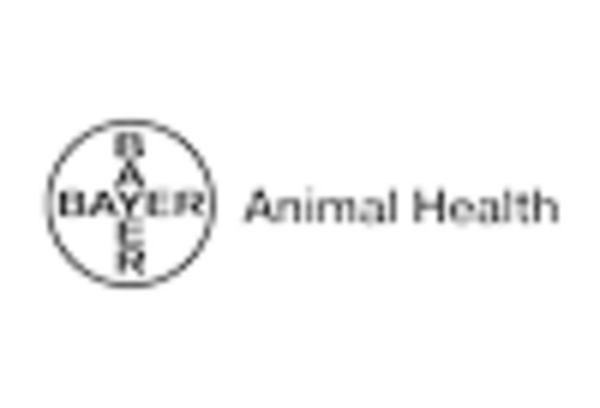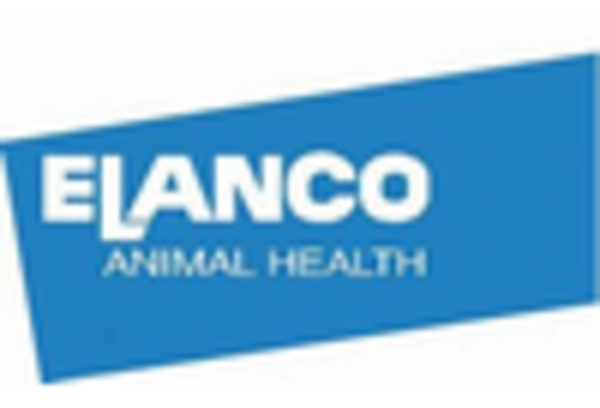Growth in Livestock Production
The growth in livestock production is a significant driver for the Livestock Dewormer Market. As the global demand for meat, dairy, and other animal products continues to rise, livestock farmers are compelled to enhance their production capabilities. This increase in livestock numbers correlates with a higher incidence of parasitic infections, necessitating effective deworming solutions. Data indicates that the livestock sector is projected to grow by 2.5% annually, further fueling the demand for dewormers. Consequently, the Livestock Dewormer Market is likely to experience robust growth as farmers seek to maintain healthy herds and optimize productivity.
Shift Towards Preventive Healthcare
There is a noticeable shift towards preventive healthcare in livestock management, which is driving the Livestock Dewormer Market. Farmers are increasingly adopting proactive measures to prevent parasitic infections rather than reacting to outbreaks. This preventive approach not only safeguards animal health but also enhances productivity and profitability. The trend is supported by veterinary recommendations advocating for regular deworming schedules. As a result, the Livestock Dewormer Market is witnessing a growing demand for products that facilitate routine deworming, thereby ensuring the long-term health of livestock.
Rising Awareness of Parasitic Infections
The increasing awareness of parasitic infections among livestock is a primary driver for the Livestock Dewormer Market. Farmers and livestock owners are becoming more educated about the detrimental effects of parasites on animal health and productivity. This awareness is leading to a heightened demand for effective deworming solutions. According to recent data, parasitic infections can reduce livestock productivity by up to 30%, prompting farmers to invest in dewormers. As a result, the Livestock Dewormer Market is witnessing a surge in product development aimed at addressing these health concerns, thereby enhancing overall livestock performance.
Regulatory Support for Animal Health Products
Regulatory bodies are increasingly supporting the development and use of animal health products, including dewormers, which is positively impacting the Livestock Dewormer Market. Governments are implementing policies that encourage the use of safe and effective deworming agents to ensure animal welfare and food safety. This regulatory support not only facilitates market entry for new products but also promotes research and development in the sector. As a consequence, the Livestock Dewormer Market is expected to expand, with a projected growth rate of approximately 5% annually over the next few years, driven by favorable regulations.
Technological Innovations in Deworming Solutions
Technological innovations in deworming solutions are significantly influencing the Livestock Dewormer Market. Advances in formulation technologies have led to the development of more effective and targeted dewormers, which are easier to administer and have fewer side effects. Innovations such as sustained-release formulations and combination therapies are gaining traction among livestock producers. These advancements not only improve the efficacy of deworming treatments but also enhance compliance among farmers. As a result, the Livestock Dewormer Market is poised for growth, with new products entering the market that cater to the evolving needs of livestock health management.


















Leave a Comment